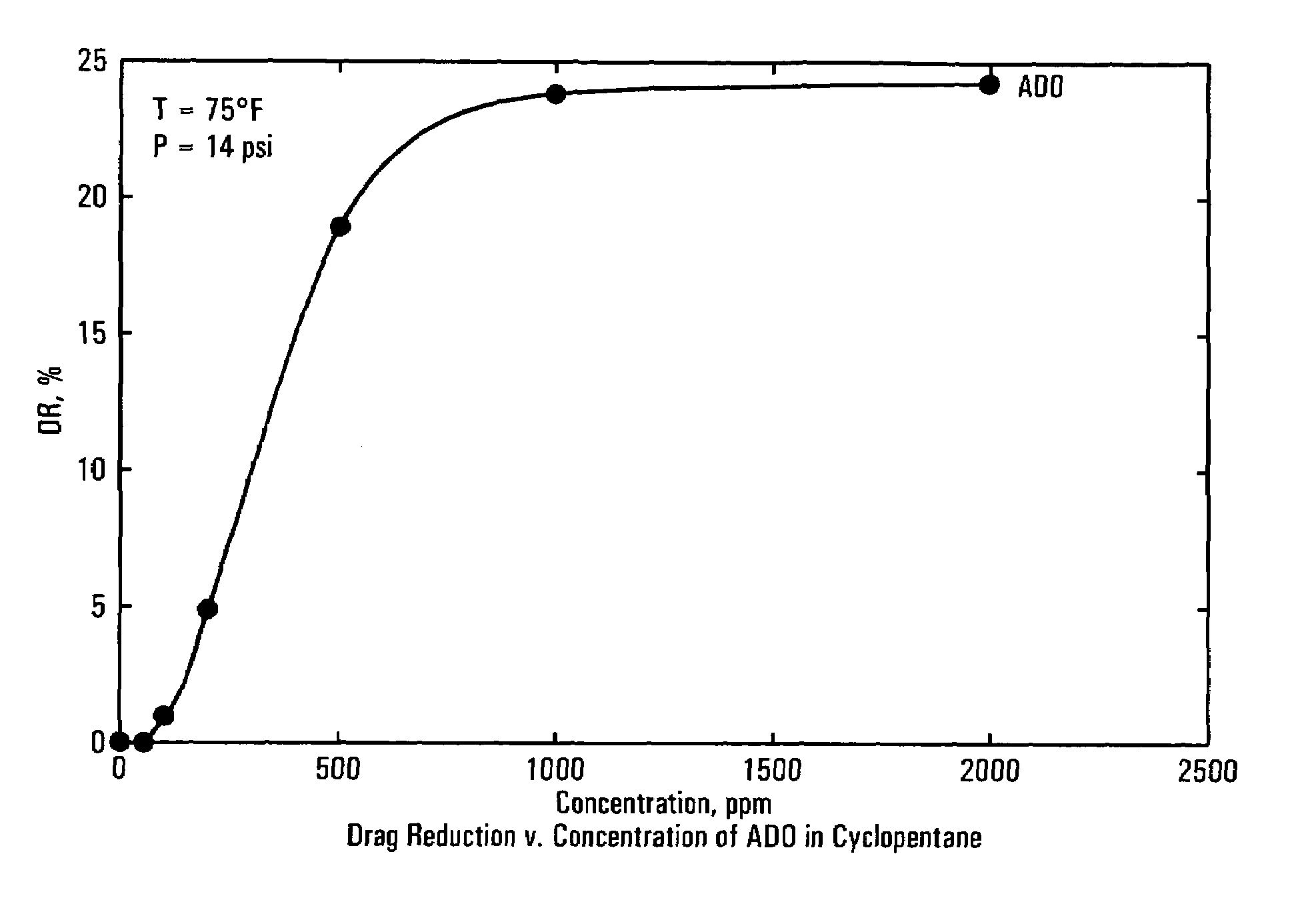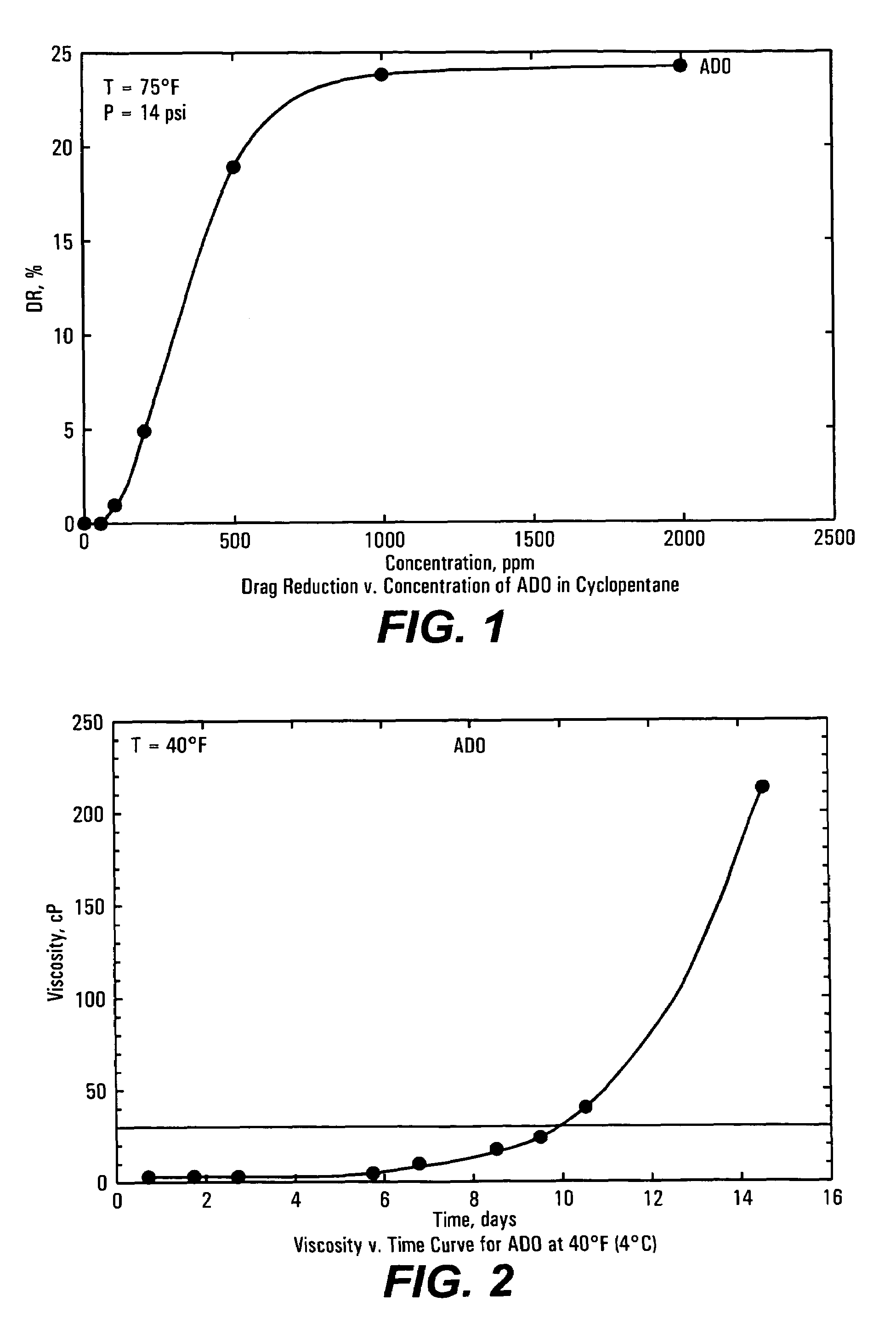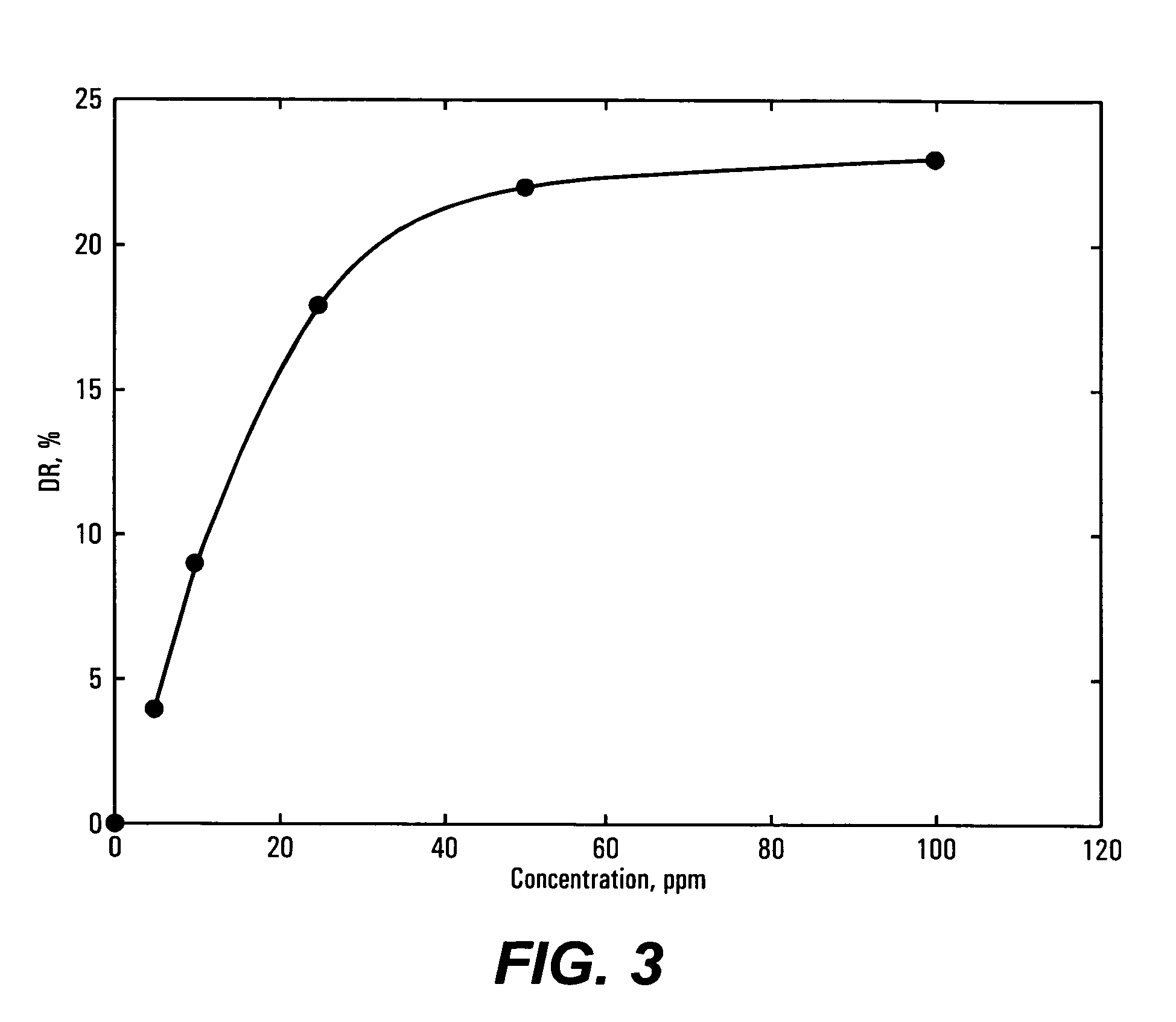Aluminum carboxylate drag reducers for hydrocarbon emulsions
a technology of aluminum carboxylate and drag reducing gel, which is applied in the directions of transportation and packaging, wellbore/well accessories, sealing/packing, etc., can solve the problems of reducing the reducing the drag reducing efficiency of the polymer, and requiring special injection equipment. , to achieve the effect of reducing the drag of the fluid, and being ready for manufactur
- Summary
- Abstract
- Description
- Claims
- Application Information
AI Technical Summary
Benefits of technology
Problems solved by technology
Method used
Image
Examples
example 1
[0050]Various combinations of fatty acids and their ratios in organic solvent, combinations of fatty acids and aluminum carboxylates, and aluminum carboxylate dispersions were evaluated to determine the optimum composition for their overall drag reduction effect and resistance to shearing. Two basic tests were employed to evaluate the drag reduction properties of these solutions, namely the torque (rotational viscometer) test and the single pass flow apparatus test.
[0051]Torque testing was carried out in a double walled cylindrical glass cell (100 mL) with temperature controlled by using a water bath. Inside the glass cylinder an aluminum cylinder spun at a constant rate in the fluid of interest (2 mm thick). The cylinder was attached to a torque meter, which sends an analog voltage through a frequency filter where the signal is converted to a digital signal that is logged into a computer. The DRA was added in increments using a micro-syringe and a concentration profile was obtained...
example 2
[0057]The drag reduction—concentration profile for aluminum dioctoate (ADO) in cyclopentane obtained in the torque test is shown in FIG. 1. These results indicate high drag reduction activity of ADO in cyclopentane with minimum effective concentration of ˜500 ppm. The stability to shear of aluminum diacids formulated in two different solvents (kerosene and xylene) in cyclopentane at 1000 ppm is shown in Table II. The results show little reduction in activity of ODO in both solvents over 3 hours in the torque test.
In Situ Reaction of Aluminum Monocarboxylate with Carboxylic Acid
[0058]The effect of two aluminum dicarboxylates, aluminum dioctoate (ADO) and aluminum octoateoleate (AOO), on drag reduction of fully activated (1 hour at 120° C.) and in situ activated product (at 85° C.) in cyclopentane at 1000 ppm is shown in Table III. The results show good drag reduction properties of the temperature activated aluminum carboxylate.
[0059]
TABLE IIIEffect of Acid Combination and Acid Chain ...
example 3
[0060]The viscosity of the 8% aluminum carboxylates, ADO and AOO, in xylene at 40 and 75° F. (4 and 24° C.) was determined as a function of time. The curve for ADO is shown in FIG. 2. The relatively low viscosity of the AB mixtures of <30 cP obtained at 40° F. (4° C.) over an extended time period (days) demonstrates the suitability of the aluminum carboxylate mixtures for injection via umbilical into the flow lines. Thus, in the event of well shut-in for days at the time, no significant changes in viscosity / injectability are expected.
PUM
| Property | Measurement | Unit |
|---|---|---|
| Temperature | aaaaa | aaaaa |
| Temperature | aaaaa | aaaaa |
| Temperature | aaaaa | aaaaa |
Abstract
Description
Claims
Application Information
 Login to View More
Login to View More - R&D Engineer
- R&D Manager
- IP Professional
- Industry Leading Data Capabilities
- Powerful AI technology
- Patent DNA Extraction
Browse by: Latest US Patents, China's latest patents, Technical Efficacy Thesaurus, Application Domain, Technology Topic, Popular Technical Reports.
© 2024 PatSnap. All rights reserved.Legal|Privacy policy|Modern Slavery Act Transparency Statement|Sitemap|About US| Contact US: help@patsnap.com










